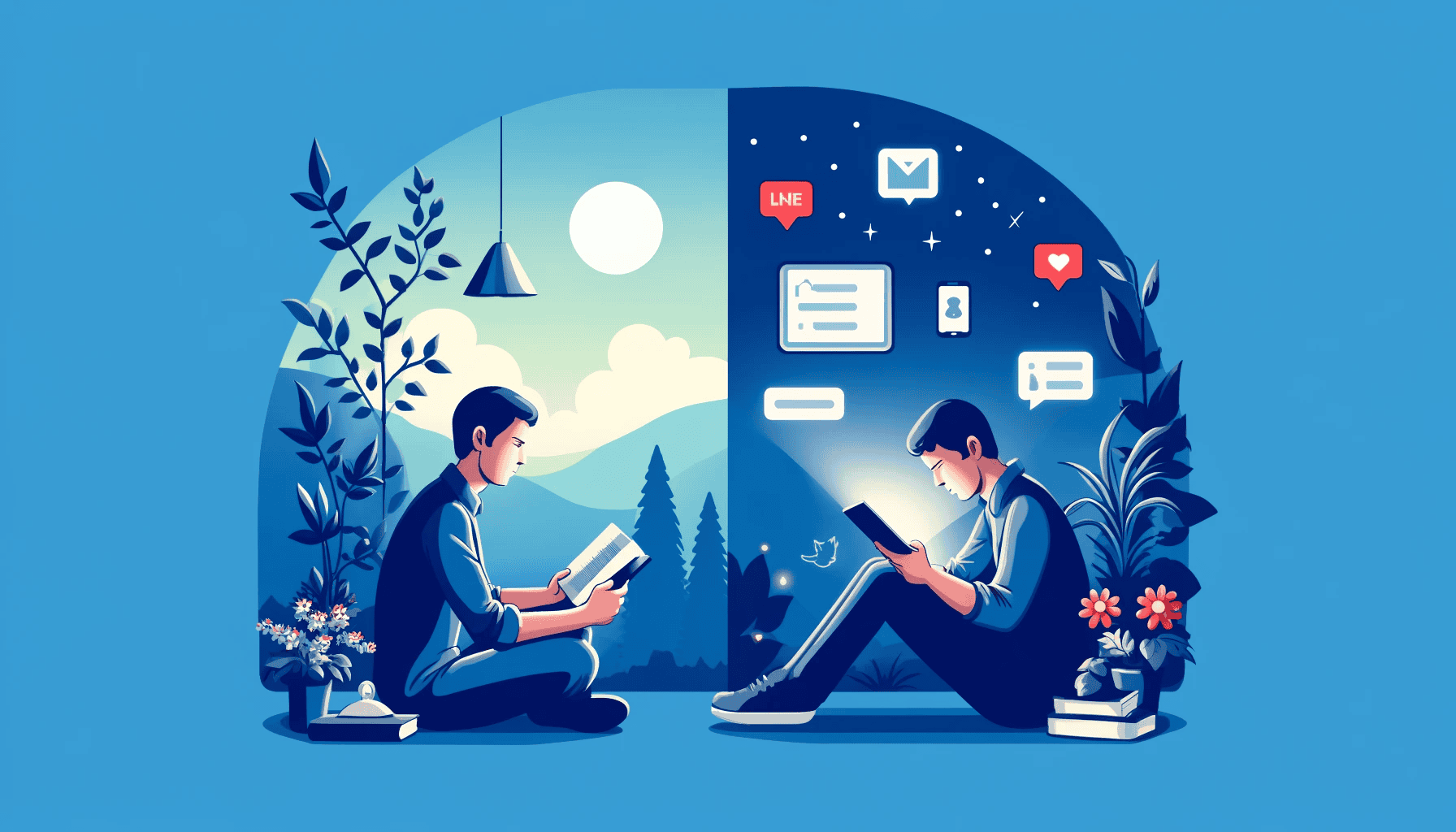
Imagine settling down to read your favorite book. Do you reach for a well-worn paperback, or do you download it to your tablet or e-book reader? This seemingly trivial choice runs deeper than you think. It’s actually an intriguing scientific debate: Does reading on paper differ from reading on a screen in terms of comprehension, retention, and pleasure?
Recent studies suggest that the medium indeed matters. In early 2024, researchers at Macquarie University in Australia reviewed the most relevant studies they could find about the different outcomes when reading digital or paper content. The conclusion is that comprehension tends to be less effective when reading on screens than on paper.
The Screen Inferiority Effect
This may be surprising to learn. After all, whether it’s a digital screen or a book, the written words look the same and should be interpreted in the same way. But it’s not quite so, say the researchers. Instead, the evidence points to a “complex interplay of visual and cognitive influences on how people engage with digital reading.”
Professor Erik Reichle, from Macquarie’s School of Psychological Sciences, highlights the fact that reading doesn’t come naturally to humans. The first modern humans appeared roughly 300,000 years ago, but the invention of writing and symbolistic communication only appeared much more recently.
“We did not evolve to read, and the interplay of cognitive and visual systems that is needed for us to do so is incredibly complex,” he says.
“It requires rapid shifts of attention and higher-level linguistic representation in a series of separate mental processes all happening dynamically, and each taking 60–200 milliseconds.
“Our language developed as speech, so speaking and listening come naturally, but reading only emerged about 5,500 years ago.
“We are not hard-wired to read, and it remains something we have to learn, and can only master by practicing for 10 to 15 years.”
Digital screens are even more recent, and as such reading on an electronic device introduces new challenges for the brain when interpreting written words. For instance, digital reading often leads to a shallower understanding and poorer recall of details compared to reading printed text — and it gets worse when we’re under time pressure. This phenomenon has been dubbed the “screen inferiority effect.”
The only exception to the screen inferiority rule may be e-readers. E-readers display text and images using electronic ink technology, which mimics the appearance of paper by reflecting light rather than emitting it. These devices usually prefer documents and books in EPUB format, but PDFs or even converting PDFs to Word are viable options. The fact that e-readers mimic the experience of reading a book so closely may explain why screen inferiority doesn’t affect these users.
“When people become immersed in a narrative, like a novel, then comprehension is less likely to be affected by reading on a screen,” said psychologist Dr. Lili Yu from Macquarie University.
“However, comprehension drops when we are using a screen to read information-dense text, like a textbook for study.
“The amount of time you have available also seems to be a factor, as when readers are put under pressure in studies to read something quickly, their comprehension drops for test on screen compared to paper.
“The effect is more pronounced for less skilled readers, and one study also suggested that reading on a screen can increase readers’ susceptibility to misinformation, as they don’t notice discrepancies in the content so easily.”
Understanding digital reading challenges
It’s not entirely clear why exactly comprehension drops on a digital screen. Factors like screen brightness, eye strain, and the association of devices with leisure and multitasking may diminish our ability to focus on digital content. A lot of people do most of their reading on their smartphones, which often involves short-form and not very intellectually challenging content.
Unlike static paper, screens also often incorporate moving elements like pop-ups and videos, which compete for attention and disrupt concentration. This can be particularly taxing for less skilled readers or when engaging with dense, information-heavy texts such as academic papers or technical reports.
One interesting recent research focused on people’s attitudes toward different kinds of media. The study found that, whether they realize it or not, many people approach computers and tablets with a state of mind less conducive to learning than the one they bring to paper.
“There is physicality in reading,” says developmental psychologist and cognitive scientist Maryanne Wolf of Tufts University in an interview with Scientific American, “maybe even more than we want to think about as we lurch into digital reading—as we move forward perhaps with too little reflection. I would like to preserve the absolute best of older forms, but know when to use the new.”
“Something we don’t yet understand is what effect it will have on children who are learning to read primarily on screens, and we are not likely to find out for another 10 to 15 years,” Dr. Yu said.
Relearning to focus
As our reading habits evolve with technology, the ability to concentrate on lengthy texts, such as books, has diminished. This decline in focus could be partially attributed to the multitasking nature of modern media consumption. How often do you feel the urge to scroll on your smartphone while watching a movie or even talking to someone? This constant switch between tasks provides short bursts of dopamine but does little to encourage sustained attention.
All is not lost though. The human brain is incredibly plastic and can adapt to its environment quickly and efficiently. The researchers conclude in their study that “readers can develop adaptive reading strategies” to mitigate the screen inferiority effect. However, no one said this would be easy.
“Focus is a skill that you have to rebuild gradually, so don’t expect to get it back immediately,” Professor Reichle says.
“It’s going to take time, but it is worth the effort.”


